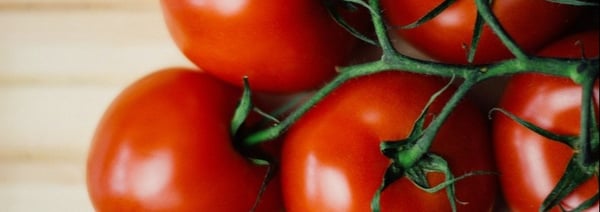Sustainability is increasingly recognised as an important issue by food companies. More and more, food companies and consumers are demanding that products are not only functional, but have minimal impact on the environment too. Packaging manufacturers are responding to this demand by moving away from the petroleum-based plastics used in the past and searching for more sustainable alternatives.
One alternative to petroleum-based plastics is bioplastics produced from renewable and biodegradable biopolymers such as polysaccharides and proteins. Replacing petroleum-based plastics with bioplastics could help reduce the amount of non-biodegradable municipal solid waste produced, and decrease our dependence on diminishing petrochemical sources for the production of packaging materials.
There has been a considerable amount of research into the production of bioplastics over the last few years, with several different starting materials having been investigated, including:
Despite the progress being made in this area, there is still some scepticism about the performance and value of bioplastics, particularly regarding the lack of end of life options for some. Not all bioplastics are biodegradable or compostable, and these issues, together with concerns about the agricultural production of the starting materials, have led some people to question whether they are really any more sustainable than petroleum-based plastics.
Food wastes are another option for use as starting materials for bioplastics, which may overcome some of these concerns by making use of by-products from food processing that would otherwise go to waste. Tomato skins, for example, have been evaluated for the production of cutin-like biodegradable plastics for use as environmentally friendly food packaging.

In spite of the misgivings regarding certain bioplastics, several major players in the food industry are taking a keen interest in bio-based materials for their packaging. Some, including Coca Cola, have already launched recyclable packaging containing plant-based materials, and the technology company Avantium is now working towards producing recyclable polyethylene furanoate (PEF) plastics made entirely from bio-based materials on a commercial scale. PEF, which can be used as an alternative to polyethylene terephthalate (PET), is claimed to have several benefits over its petroleum-based counterpart, including:
- a lower carbon footprint
- superior barrier properties
- a higher glass transition temperature
- and a lower melting temperature
Furthermore, it can be processed using the same equipment as PET, making it potentially easy for manufacturers to make the switch from PET packaging.
Although there are still some hurdles to overcome, bioplastics are starting to look like a promising alternative to petroleum-based plastics. This is by no means the only option for improving the sustainability of food packaging, however, and other manufacturers are going about it in a number of different ways.
One way that is proving popular is to simply reduce the amount of packaging used. This can be done by reducing the weight of packaging in a process known as “lightweighting”. Reducing the weight of packaging means that not only are fewer raw materials used in the manufacturing process, but the environmental impact stemming from the transportation of packaged products can also be significantly reduced. Manufacturers of glass bottles and jars, as well as metal cans, have been making great progress in this area, coming up with innovative designs that reduce the weight of the packaging while maintaining its integrity.
In a bid to cut down on the amount of packaging used, some manufacturers have also started removing or reducing the size of packaging components such as outer sleeves. This, of course, means less room for providing all the information about a product that the manufacturer might want to.
But this is where another big trend hitting the packaging industry can come into play – quick response (QR) codes. With the rise in smart phone technology, more and more people can access additional information almost instantly by simply scanning a QR code printed on the food packaging. These codes have been used on “smart packaging” to provide information on batch specific allergen data, food origin and traceability, enhanced nutritional information and sourcing policies, welfare standards and recipes.
With all these developments, the packaging of the future looks set to be more sustainable and more informative than ever before.
Related Posts:
- What is Food Packaging?
- Is Food Packaging a Benefit to Society?
- Food Production and the Evolution of Packaging
Image Credits: renato cardoso and Greenbay at www.freeimages.com and Unsplash at www.pixabay.com


